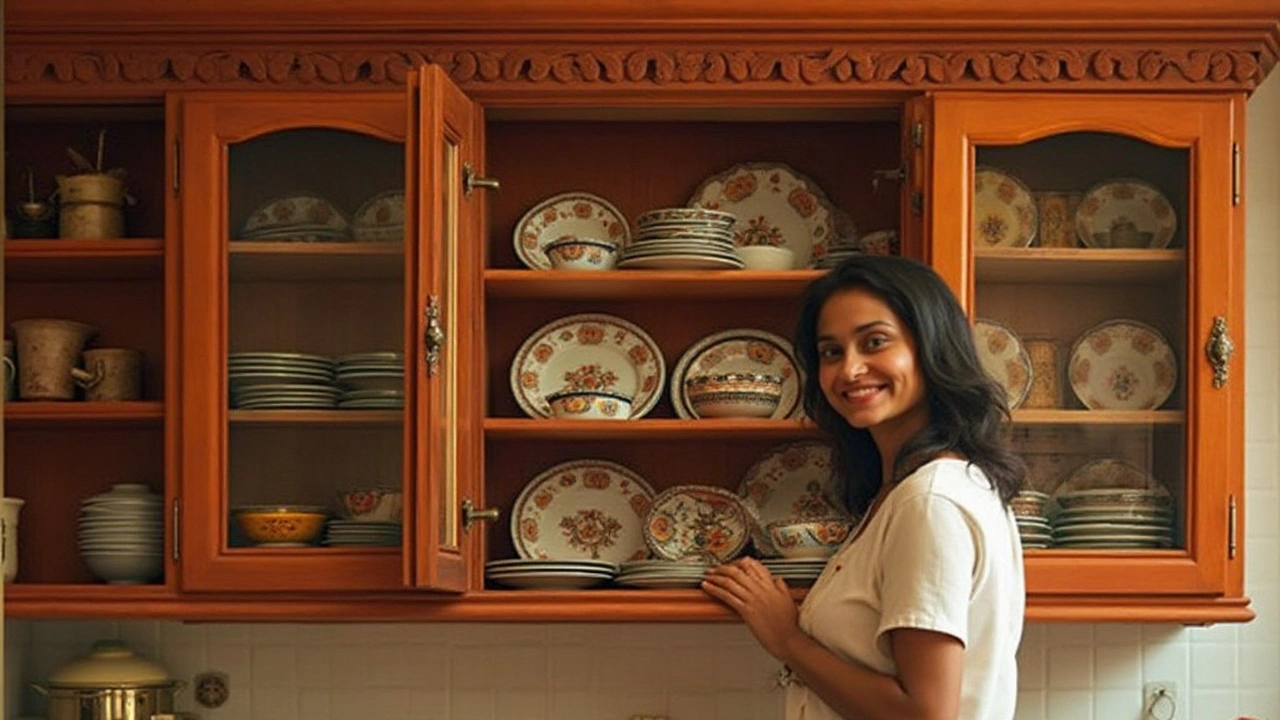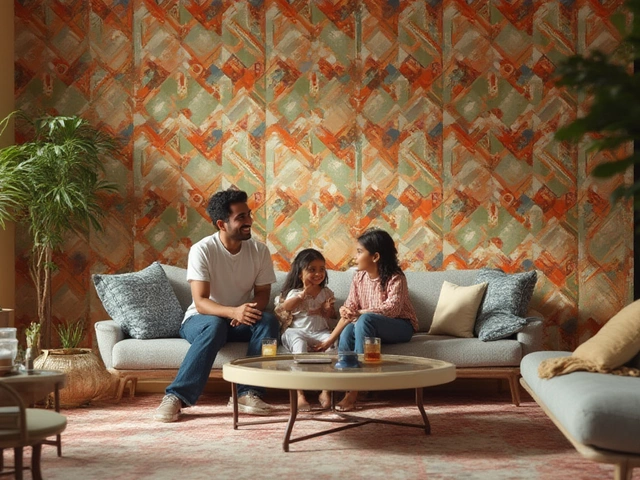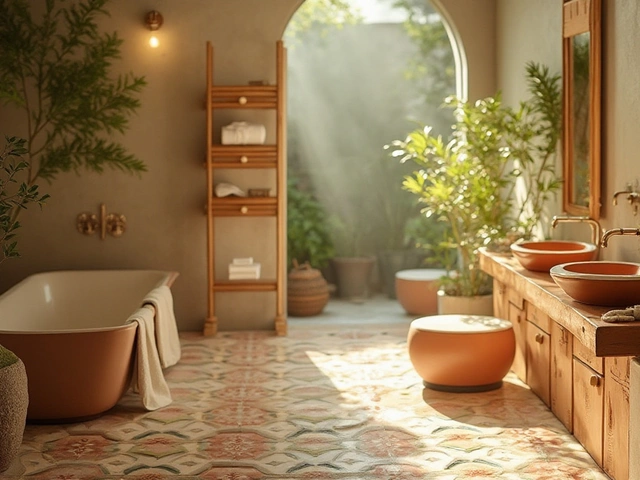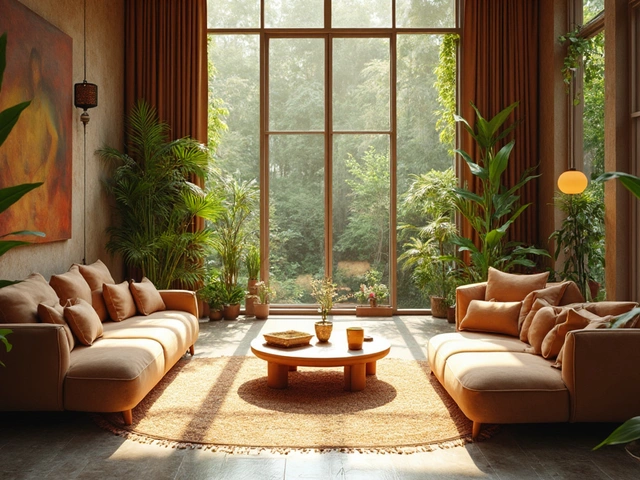When it comes to kitchen design, many people overlook the significance of proper plate storage. While it may seem trivial, where you choose to store your plates can impact both the functionality and the flow of your kitchen. With the right cabinet choice, you can enhance efficiency and enjoy a more organized cooking area.
This article delves into everything from understanding different kitchen layouts to selecting the type of cabinet that suits your needs. We uncover practical tips designed to help you maximize space while keeping accessibility in mind. Whether you're planning a complete kitchen remodel or just looking to refresh your current setup, storing your plates effectively could be the small change that makes a big difference.
- Understanding Kitchen Layouts
- Types of Cabinets for Plate Storage
- Considerations for Accessibility
- Innovative Storage Solutions
- Balancing Aesthetics and Functionality
- Long-term Maintenance Tips
Understanding Kitchen Layouts
Deciphering the mysteries of optimal kitchen design often starts with gaining a clear understanding of the various kitchen layouts available. Each arrangement has its unique advantages, and selecting a layout that corresponds with your needs can entirely transform your cooking experience. Typically, layouts evolve from the available space and the personal preferences of the household. The most popular arrangements include the U-shape, L-shape, one-wall, galley, and peninsula kitchens. Each layout has unique characteristics influencing where your plate storage cabinets may best fit into the bigger picture.
The U-shape kitchen, notably spacious, wraps around three walls, offering ample storage but potentially challenging dish placements due to its corners. However, its structure allows for towering cabinets to keep plates and other items neatly organized. An L-shape kitchen, on the other hand, presents a more accessible alternative. By occupying two adjacent, perpendicular walls, it facilitates an easier flow between different workstations, making it simpler to centralize your plate storage along one side, maximizing the openness of the other. Designing with ease of access as a priority can turn this layout into a modern culinary haven.
The trends in kitchen layouts have always leaned towards optimizing space while ensuring convenience, as Elle Décor mentions, 'A well-designed kitchen should never hinder the cook's creativity.'
The one-wall kitchen, typically found in smaller homes and apartments, offers a straightforward, space-saving design. Since all utilities and storage units line up along a single wall, selecting the right-sized cabinet is crucial to avoid clutter and inefficiency. By placing a cabinet designated specifically for plates above or near the sink or dish rack, you reduce movement and improve workflow. Meanwhile, the galley kitchen, popular in homes and commercial kitchens alike, splits its workspace between two parallel walls. Strategic placement of plate cabinets in such a setting can streamline work processes. Above-counter storage on one wall, complemented by open shelves on the other, introduces functionality while avoiding the constraints of a confined space.
Finally, the peninsula kitchen brings the flexibility of an island but within a compact footprint. Its genius lies in the extended counter, often jutting from an L-shaped arrangement or freestanding in an open layout. This counter can host both plate storage cabinets and additional seating, essentially marrying dual roles in one structure. This clever utilization of space encourages a social atmosphere, turning the kitchen into a hub for gatherings while maintaining its original purpose. Understanding the nuances of each layout can pave the path to an efficient, stylish kitchen that addresses both current organization needs and future aspirations.
Types of Cabinets for Plate Storage
Choosing the right cabinet for your plates is a cornerstone of effective kitchen design. Different cabinet types present varied advantages that match not only your aesthetic preferences but also your kitchen's functional requirements. Traditional base cabinets are the unsung heroes of many kitchens, offering ample space for stacking plates of all sizes. These cabinets sit beneath countertops and provide easy access without requiring any stretching or reaching. However, it's essential to ensure these cabinets offer the right organization features, such as adjustable shelving or pull-out drawers, which can make storing and accessing plates much easier. Positioning these cabinets near the dishwasher can streamline your kitchen workflow, converting the tiresome post-dinner cleanup into a seamless routine.
Wall cabinets, hanging gently at eye level, are another favorite option. They suit smaller kitchens or spaces where floor-level storage is limited. They're a godsend for those who prefer to keep the floors open for maneuvering larger kitchen appliances. The clear advantage here is that plates stored at this level are easier to grab, minimizing strain on your back and preventing awkward bending. It's wise to equip these cabinets with plate dividers to prevent accidental chipping and to maintain an organized look. Not all wall cabinets are created equal, though. Some feature glass doors, adding a decorative touch while allowing diners to appreciate the elegance of your china or patterned dinnerware. If transparent display isn't your style, opt for frosted or timber doors for a chic yet understated vibe.
Corner Cabinets: A Creative Twist
Often overlooked, corner cabinets can provide significant storage possibilities. Many kitchens have odd corners that seem to stubbornly resist traditional storage methods. Enter the magic of lazy Susans! These rotating trays fit snugly into corners, allowing easy viewing and retrieval of stored items, including plates. All you need to do is spin the tray to access the stack of bowls or salad plates nestled at the very back. These corner solutions put every inch of kitchen space to use without sacrificing accessibility. When choosing corner cabinets, consider those with soft-close hinges to thwart slamming doors from major vibrations that might lead to chipped crockery.
Backsplash Cabinets for Contemporary Spaces
In ultra-modern setups where maximizing space and maintaining a sleek profile is key, backsplash cabinets offer a novel solution. Residing just above the countertops, these compact additions provide a space-efficient alternative for storing plates that you regularly use. Their strategic placement makes them particularly advantageous, cutting down on the time spent bending down or rifling through larger, harder-to-manage spaces. Be mindful, as these are smaller than standard cabinets and often require you to prioritize which dishware earns this prime real estate. According to a 2023 study by the Kitchen Trends Research Institute, homes that utilize backsplash cabinetry experience a reported 20% increase in kitchen efficiency, often leading to quicker meal prep time and less cleanup hassle.
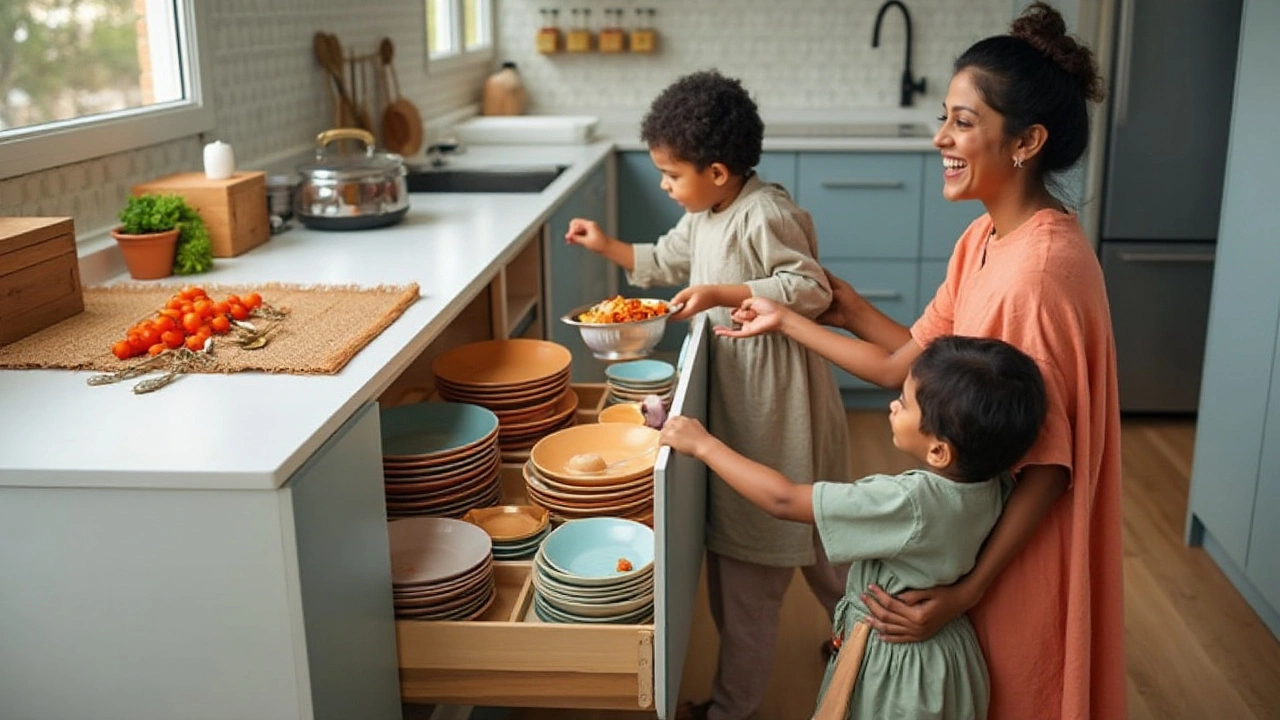
Considerations for Accessibility
Accessing plates effortlessly can make kitchen activities less of a chore. When considering accessibility, it's crucial to think about the daily rhythm of your cooking and cleaning routine. Nobody wants to deal with a hassle when reaching for the dishes, whether it's breakfast time or a busy dinner prep. Cabinets placed too high or deep can be inconvenient, especially for shorter individuals or those with limited mobility. To improve accessibility, think about placing dish cabinets at eye level or just below, allowing for easy reach without the risk of injury or mishaps.
One effective strategy is to strategically place cabinets near your dishwasher. This setup minimizes the steps needed when storing plates directly from the washer, reducing breakage risks and making the task quicker. Organizing plates in cabinets close to work areas or directly above countertops where you do the most food prep can save time. This alignment helps to streamline your cooking process, letting you focus more on creativity and less on logistics. According to some kitchen design experts, ideally, frequently used cabinet spaces should be within 15 inches depth and between 24 to 48 inches height from the floor.
Installing pull-out shelves or rolling trays in your cabinets can make a noticeable difference. These enhancements bring stored items out toward you, removing any need to reach far back into the darkness. Kitchen organization tools such as lazy Susans can also help by rotating items to the front with a simple spin. If you find built-in solutions difficult, consider using modular inserts that fit your existing layout. These accessories provide significant flexibility and ensure that your plate storage keeps pace with your changing needs over time.
"The best kitchens are the ones tailored to your personal workflow," says Jane Crowly, noted interior designer. "Arrange your cabinets around your motions, not just for the sake of appearances, and you'll discover a new level of ease in your kitchen activities."
The modern solution for maximizing plate accessibility involves innovative storage mechanisms. Soft-close hinges and push-to-open technologies might not sound like much, but they prevent doors from closing too hard or becoming stuck, making grab-and-go easier on the busiest days. Enhanced lighting, either from in-cabinet LEDs or beneath-cabinet lighting, allows you to see clearly inside and effortlessly find what you need. Among households with smaller or old-fashioned kitchens, adding a simple spotlight under shelves can illuminate those dark corners efficiently.
Taking the long view, when making decisions, consider who the most frequent users of the kitchen are over the coming years. Will children need easy access, or perhaps elderly family members? For the average family, a blend of low and mid-height cabinet placements suits an everyday range of users while meeting their aesthetic and practical needs. In a family of mixed heights, adjustable shelving options can accommodate growing children and their eventual transition to adults. By integrating these insights into your kitchen design, you ensure that the space is functional, inclusive, and welcoming for everyone.
Innovative Storage Solutions
Exploring new ways to store your plates in the kitchen can lead you to both enhanced functionality and a stunning kitchen aesthetic. A well-designed kitchen should never compromise on practicality, yet it doesn't have to sacrifice style to get there. Leveraging innovative storage solutions is the key to achieving this balance. One emerging trend is the use of vertical plate racks. These racks allow you to utilize wall space, keeping countertops free and providing easy access to plates, especially in smaller kitchens. Not only do they save space, but they also create a visually appealing display akin to open shelving, often seen in modern designs.
For those with a minimalist taste, drawer systems designed specifically for storing plates are becoming more popular. Equipped with pegs or dividers, these drawers keep each plate secure and prevent chipping, which is a common concern with traditional stacking methods. A unique advantage of such systems is that they easily fit into existing cabinets, providing a seamless addition without requiring a full kitchen renovation. The customization potential with these systems is noteworthy too, as you can adjust the dividers for plates of various sizes, from side plates to large serving platters.
Another innovative solution involves using corner cabinets equipped with pull-out racks. Many kitchens lose significant space in corners, yet these smart racks optimize every inch available. They glide effortlessly, allowing you to retrieve or store plates without rummaging or rearranging. Coupled with the right engineering, they not only add convenience but also transform previously wasted areas into functional spaces that enhance your kitchen experience.
"Good kitchen design is the art of making complex, useful spaces appear effortless and beautiful," said Jennifer Gilmer, a renowned kitchen architect whose designs have won several industry awards.
Instead of traditional cabinets, some people are experimenting with open cabinetry. This style encourages creative plate arrangements and brings color and texture into the kitchen when using decorated or colorful dinnerware. Although more maintenance is required to keep everything clean and dust-free, the accessibility and visual appeal has many people rethinking their storage preferences. For a touch of elegance, consider incorporating glass-front cabinets, which retain the open feel but add an extra layer of protection from kitchen residues.
Consider recharge stations within your cabinetry system as well. The idea hinges on placing LED lights inside cabinets or drawers where plates are stored. With sensors that switch the lights on upon opening, your kitchen is not only more functional but also illuminated in a way that highlights its design elements, especially during evening gatherings. These lights offer practical benefits while adding a touch of high-tech sophistication, creating a space that is inviting and aesthetically pleasing.
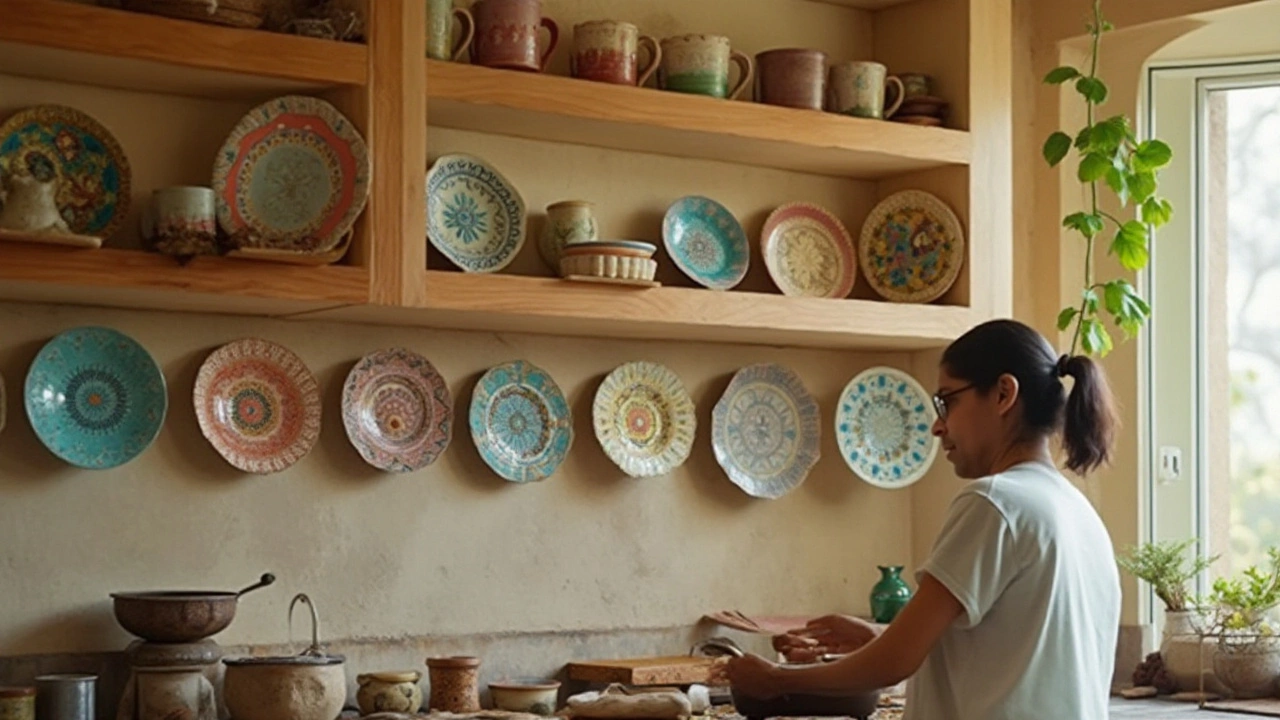
Balancing Aesthetics and Functionality
Balancing aesthetics and functionality in kitchen design is like walking a tightrope; too much focus on one, and you risk losing the value of the other. When it comes to finding the perfect place for your plates, aesthetics matter just as much as how easy they are to reach. It's about creating a space that is not only efficient but also pleasurably inviting. The right cabinet choice blends into the kitchen's overall design, complementing fixtures, and seamlessly tying elements together while staying practical for everyday use.
The type of material used for cabinets can significantly influence both aesthetics and functionality. Wood, metal, and glass each bring something unique to the table. Wooden cabinets often provide warmth and a touch of traditional elegance, while metal ones stand out for their sleek, modern feel. Glass fronts can make the room feel bigger and allow you to display your dishes artfully. However, you should weigh these choices against their practicality. Wood might need more maintenance to maintain its look, metal could show scratches easily, and glass can demand frequent cleaning to remain spot free.
One of the best approaches is to keep utility at the forefront without sacrificing beauty. For practical reasons, it's essential that cabinets designated for plates are close to the dishwasher or dining area. This proximity reduces movement around the kitchen and speeds up tasks. Meanwhile, selecting cabinets with design elements such as intricate molding or unconventional handles can make them a focal point in your kitchen without compromising their use. As architectural designer Sarah Susanka said, "Functionality in design without beauty results in mere utility. Functionality, complemented by beauty, is the recipe for delight."
Color schemes also play an important role in balancing aesthetics with functionality. Neutrals can blend in easily with most design styles, but daring to choose bolder colors can create a stunning visual impact. While a deep blue or emerald green might seem bold for cabinets, they offer a captivating aesthetic appeal, especially when integrated thoughtfully into the room’s palette. These choices can boost the kitchen's ambiance, making everyday tasks a bit more pleasurable.
Storage solutions within the cabinets can tip the balance between visual appeal and usability. Sliding shelves, lazy Susans, or adjustable dividers can help keep plates organized, making them easy to access and freeing up spaces that can otherwise become chaotic over time. The key is to ensure these interiors match the exterior beauty while maintaining logical place order among stored items. Consider incorporating technology, like soft-close hinges or motion-sensitive lights, which add a touch of luxury yet serve a practical function.
For those passionate about sustainable practices, opting for eco-friendly or reclaimed materials can enhance the kitchen's look while serving a greater purpose. This choice can often add a distinctive character to your cabinetry, infusing a story that reflects personal values. Contrary to common belief, sustainability doesn’t mean compromising on style or function. In fact, it can enrich your space's narrative, offering both eye-catching aesthetics and innovative utility.
In the end, the perfect balance between aesthetics and functionality is about knowing your needs and style preferences—and making decisions that align with both. Whether it’s through the clever use of lighting, the subtle introduction of artistic elements, or innovative design without frills, a well-balanced kitchen cabinet ensures everyone's favorite dishes are within reach, safely stored, and proudly housed in a beautiful space.
Long-term Maintenance Tips
Maintaining your kitchen cabinets, especially those storing your beloved plates, is essential for ensuring they stay functional and looking great for years to come. One of the first things to think about is the material of your cabinets. Wooden cabinets, while aesthetically pleasing, require a bit more attention than others. To keep the wood in good condition, think about regularly applying a polish or sealant to protect against moisture. Doing so can prevent warping or cracking, which is a common issue in kitchens due to the humidity and temperature changes.
Another critical area to focus on is the hardware. Over time, hinges and knobs can wear out due to everyday use. It's wise to periodically check and tighten any loose screws and replace parts that are showing signs of damage or rust. Investing in quality hardware can go a long way, minimizing the need for replacements. As renowned interior designer, Sarah Richardson once said,
"The key to a long-lasting kitchen is investing in quality where it counts the most."Keeping up with these small repairs can help prevent bigger issues down the road.
It's also beneficial to have a cleaning routine set up specifically for your kitchen cabinets. Accumulation of dust, grease, and grime is inevitable in a kitchen, and left unchecked, it can dull the finish and lead to larger cleaning challenges. Use a mild detergent mixed with warm water to wipe down the interiors and exteriors of your cabinets regularly. Avoid using abrasive cleaners which can damage the finish, particularly in painted or varnished cabinets. Adding a few drops of essential oils to your cleaning mixture can leave a pleasant scent while also serving a functional purpose.
When it comes to kitchen organization, the way you place items inside your cabinets matters too. For plate storage, consider using plate separators to reduce wear and tear from stacking. Proper air circulation helps in preventing musty odors and keeps your plates 'fresh' in a sense. Include dehumidifiers or small silica gel packets if you live in a particularly damp area. A neat trick is to rotate your plates regularly, ensuring even usage across the set and reducing the risk of uneven wear.
Finally, take note of the environmental impact on your cabinets. If your kitchen gets a lot of sunlight, UV rays can fade cabinet colors over time. Installing blinds or window treatments can help minimize this effect and protect your investment. Likewise, maintaining a stable temperature and humidity level with good ventilation can support the longevity of your kitchen's materials. In some regions, a small investment in a climate control system or a simple ceiling fan can work wonders.
